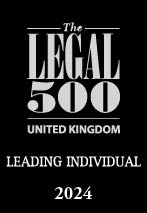The Court of Session was founded in 1532, though there was in practice a central court in Edinburgh long before then. In modern times, the Court is in Parliament House, which is where the old Parliament of Scotland sat before it was adjourned in 1707. The Court hears cases at first instance (in the “Outer House”) and appeals (in the “Inner House”).
Claims for money started in the Court of Session must be for at least £100,000; claims for less than that amount must be started in the Sheriff Court or in the Tribunal system, depending on the type of case.
The Court of Session also deals with all judicial reviews, as well as certain other special claims. Solicitors cannot ordinarily represent their clients at hearings in the Court of Session. Parties must normally either instruct an advocate or solicitor-advocate, or appear on their own behalf.
There are different rules that apply to different types of cases, but here we’ll concentrate on “ordinary” cases, such as those not falling into one of the specialist procedures.
Starting a Court of Session case
A Court of Session case is started by the person making the claim (the “pursuer”) presenting a summons to the court clerks. The summons has to be in the correct form, which includes stating who the parties are, what the claim is for and the facts relied upon for why it should succeed. A fee is payable to the court at this point.
The clerks will then stamp the summons and give it back to the pursuer. That stamp is a warrant that allows the pursuer to serve the summons on the person against whom the claim is made (“the defender”). The summons is usually served by recorded delivery post, by messengers-at-arms or by the defender’s solicitors accepting it on their client’s behalf.
The defender will then usually have a period of twenty one days after service of the summons within which to decide whether he wishes to defend the claim or not.
After service of the summons
If the defender does not respond to the summons, the pursuer can ask the Court to issue a decree granting the claim, and after any litigation expenses (see below) have been dealt with that is the end of the court process. The pursuer can then proceed to enforce the decree.
In some circumstances the defender may be allowed to respond to the summons late or to have the decree recalled.
If the defender responds to the summons, the court will then issue a timetable with a date for when formal written answers to the summons must be lodged. Once answers are lodged, they are combined with the summons into a single document called the “open record”. There then follows a period (usually eight weeks) in which the parties can change (“adjust”) what they write in the open record. At the end of this period, the parties are no longer able to change the open record. The record is then “closed”. Any changes to the “closed record” can be made only with the permission of the judge.
After the record is closed
At this point, the parties should try to agree what is to happen next. If the parties cannot agree, then a hearing will be fixed to allow the judge to decide.
In most cases, there are four options for what happens next. These are:
- To allow another period for adjustment of the record. This can happen where, for example, one party requires a few more weeks to investigate the claim and produce evidence to support its position.
- The case can be put on hold (“sisted”). This can happen where a much longer time is required for investigations, or because the parties believe they may be able to resolve the dispute by other means.
- A legal debate (a “procedure roll” hearing) is fixed. This is where the dispute is about the law governing the case, and a judge’s ruling on that dispute will resolve all or a significant part of the case without the need to hear evidence. The case is argued without any witnesses giving testimony. The judge will decide which party wins the argument, then decide what happens next to the case. The judge can grant a decree allowing or refusing the claim or, for example, specify that a proof should take place to decide any disputed facts.
- A proof (or a proof before answer) is fixed. This is appropriate where the dispute is over the facts of the case. Evidence will be taken from witnesses. The pursuer’s witnesses are heard first, then those for the defender. There may also be argument about the law. The judge will determine which party wins and issue a decree allowing or refusing the claim.
After the case is decided
Usually, the only matter that remains to be determined after a case has been decided is the issue of litigation expenses. The usual rule is that the winner of the case is entitled to obtain reasonable expenses from the loser. However, this is subject to modification at the judge’s discretion.
Reasonable litigation expenses do not usually cover all of a party’s costs in a case. Often only between 50% and 70% are recovered. If the losing party has legal aid, he or she does not normally have to pay any litigation expenses at all.
Expenses are determined according to a standard scale. In the event the parties cannot agree the expenses that are to be paid, the matter may be put to the Auditor of the Court, who will decide at a special hearing (“taxation”).
If you would like to discuss a potential claim, our Dispute Resolution and Litigation experts would be happy to help.
Meet the team

Marianne Stirling
Title: Debt Recovery Manager and Accredited Debt Recovery Paralegal
Location: Glasgow














